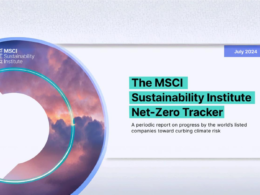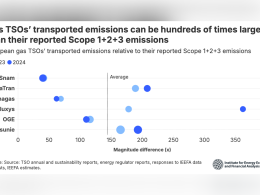Greenhouse gas emissions from the global apparel sector surged by 7.5% in 2023, according to the Apparel Impact Institute’s (AII) latest annual report, Taking Stock of Progress Against the Roadmap to Net Zero 2025. The increase marks the first year-on-year rise in emissions since the Aii began tracking climate progress in 2019.
Total emissions from the sector reached 944 million tonnes—nearly 2% of global emissions—placing the industry further off track from its goal to halve carbon emissions by 2030. The rise is largely attributed to increased production, particularly within the ultra-fast fashion segment, and a continued dependence on virgin polyester. The fossil fuel-based fibre now accounts for 57% of global fibre production, while recycled alternatives remain underused.
Despite the overall increase, the report highlights positive momentum in some areas. A growing number of brands and suppliers have made measurable reductions in their Scope 1 and 2 emissions through investments in renewable energy, efficiency upgrades, and early coal phase-outs.
Scope 3 emissions—those generated along the supply chain—are also beginning to decline among leading brands. H&M, for example, achieved a 23% reduction in Scope 3 emissions between 2019 and 2024. Other brands showing progress include Fast Retailing (Uniqlo’s parent company), Puma, and Inditex.
Supplier-led initiatives are playing a significant role in the sector’s decarbonisation. Artistic Milliners invested $100 million in renewable energy projects, while China’s Shenzhou Group reduced its Scope 1 and 2 emissions by 24% between 2022 and 2024. Elevate Textiles has achieved a 35% reduction in emissions since 2019.
“While it’s encouraging to see progress across the value chain, with meaningful case studies from both brands and suppliers, this data is a stark reminder of how far we still must go as an industry,” said Lewis Perkins, President of Aii. “The good news is we don’t have to start from scratch—resources, initiatives, funding, and partnerships are available to support every part of the fashion ecosystem.”
Released at the halfway point of what many are calling the “decisive decade,” the report calls for urgent action to accelerate progress. Key recommendations include scaling sustainable materials, improving energy efficiency, transitioning to 100% renewable energy, and eliminating coal use in apparel manufacturing.





















